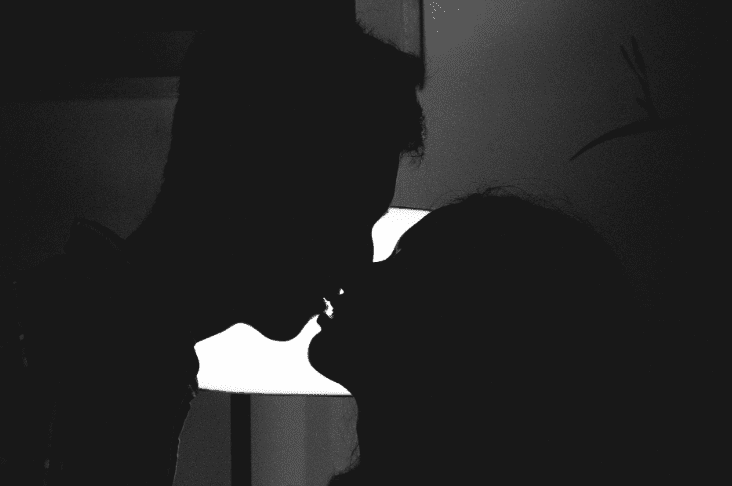Enter your next hookup feeling empowered to make safe decisions for you and your health.

“A one night stand involves “maximum excitement and minimum commitment.” – Linda Papadopoulos
Friends with benefits. No strings attached. One night-stand. Whatever you want to call it, hook-up culture has been around for decades. If you haven’t already heard the term, hook-up culture refers to the ‘culture’ in which we accept and encourage casual sexual encounters and sex without emotions or commitment.
Let’s see the brief history:
- In the early 1920s, the introduction of cars and cinemas enabled teenagers to escape their parents’ watchful eyes.
- Then, in the 1960s, casual sex became even more acceptable, with the rise of feminism and the availability of birth control.
- Now, in 2018, it continues to be a popular choice amongst teens and adults who want to enjoy sex without emotional attachment or commitment.
With hook-up apps like Tinder and Bumble, and the increasing use of social media platforms such as Snapchat, Facebook and Instagram, hooking up has become quicker and easier than ever before. Almost 3.5 million people in Australia use Tinder, propelled by lust or the quest for love.
But what are the risks? Apart from unsatisfying sex and feelings of guilt, individuals who participate in hook-up culture have a much higher risk of catching sexually transmitted diseases. Furthermore, online dating through social media and hook-up apps can often pose a threat to the personal safety of young adults.

To analyse the extent to which hook-up culture is impacting young adults negatively, let’s start with the basics.
According to the Oxford Dictionary, a ‘hook-up’ is a casual sexual encounter. There are three main reasons why people engage in hook-ups:
- To achieve instant physical gratification
- To fulfil their emotional needs
- As a means to find a long-term romantic partner
The increasing prevalence of this culture is thought to be attributed to the decline of religion, the impact of equal rights for women and the overall emergence of a sex-obsessed culture.
Today, when you search the term ‘hook-up culture’ in Google, you will see countless articles which present the view that hook-up culture is damaging, especially for young women. Apps like Tinder can become a magnet for women seeking validation. By posting provocative, scantily clad photos online, young women are sexualised and taught their self worth is based on their “sexiness”.

“Young women are being taught to be ‘sexual service stations’ for men.”
Melinda Tankard Reist, co-founder of Collective Shout For a World Free of Sexploitation
According to American sociology professor Lisa Wade, hook-up culture is something that is “institutionalised and embedded into the structure of [American] college”. (Palinchak, 2017).
Although it is associated strongly with American college culture, the concept of casual or emotionless sex being the norm is prevalent within the majority of Western countries. Here in Australia, I have both witnessed and experienced the impact of hook-up culture. It has not only changed the way I perceive sex, but also the way in which I approach dating and relationships.
Author of ‘The End of Sex’ Donna Freitas explains that there’s a lot of “suffering, alienation and shame around hooking up for both men and women, and not living up to the hook-up culture’s ambivalence about sex”.
Regardless, education on the risks that casual sex poses to health and safety is extremely important for Australian teens.
Despite the prevalence of positive feelings, hookups can have negative outcomes, such as emotional and psychological injury, sexual violence, sexually transmitted infections and unintended pregnancy.
Although not specific to Australia, the number of reports of people sexually assaulted in the UK during their first face-to-face meeting — following initial contact online — rose from 33 in 2009 to 184 in 2014.
If that isn’t enough to make you think twice about how you approach online dating, maybe these stories (which are a little too close to home — literally) will:
- A woman in Port Macquarie was stabbed repeatedly by her Tinder date before he poured petrol on her in attempt to set her alight.
- A false Tinder dating profile was set up to entice a male to Bondi Beach, where three other men chased and robbed him.
- A woman fell 14 floors from a balcony after her Tinder date refused to let her leave his apartment in Surfers Paradise.
- A woman, who met her Tinder date in Kings Cross, was later gang-raped by him and his friends.
My lesson here isn’t to scare you into deleting your Tinder and locking up your social media accounts. (If it makes you feel any better, here are some Tinder success stories.)
In my opinion, technology and social media platforms have been incredibly helpful in making dating more fun, efficient and exciting. Social media and dating apps provide us with the opportunity to reach out to people we think we’ll be compatible with based on their profile and the content they post. Whether it be that you’re both into fitness , both love to travel overseas or are both obsessed with Italian food, you’re sure to find someone you have things in common with.
But if you’re going to use dating apps like Tinder, it is worth making sure you meet your date in a crowded place and that someone you trust is aware of your location. Better safe than sorry.
Additionally, if you are participating in hook-up culture, whether it be through a no strings attached agreement or casual sex in general, it is of utmost importance that you, or your date, wears protection. (Unless you’re ready for a baby, or an incredibly horrid trip to the doctors.)
“Safe sex is great sex, better wear a latex, cos’ you don’t want that late text, that “I think I’m late” text.”
Lil Wayne, rapper



